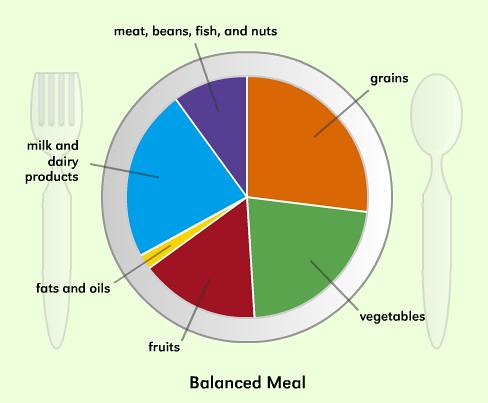Rice is often considered as an unhealthy food because of the low-carb diets. However, Rice contains Vitamins and minerals and is a component of healthy diet. There are two types of rice: White and Brown Rice. Brown rice is the unprocessed form and is high in fiber and white rice is low in fiber and more palatable.
CARBOHYDRATES:
Brown Rice is low in Carbohydrates and high in fiber while White Rice is high is Carbohydrates and low in fiber. One Cup of Brown rice contains 46 g of carbohydrates while white rice contains 53 g of carbohydrates.
PROTEINS:
Brown rice and white rice both contain small amounts of protein. Each cup of brown rice contains 4.5 g of protein while white rice contains 4.4 g of protein.
FATS:
Rice is a naturally lowfat food. One cup of brown rice contains 1.6 g of fat (0.3 g saturated fat, 0.6 g monounsaturated fat, 0.6 g polyunsaturated fat) while one cup of white rice contains 0.4 g of fat (0.1 g saturated fat, 0.1 g monounsaturated fat, 0.1 g polyunsaturated fat).
VITAMINS:
Rice provides a variety of 'B' vitamins that play a major role in energy metabolism. Brown rice contains a moderate amount of thiamin (13 percent of daily value), niacin (13 percent of daily value), and vitamin B6 (15 percent of daily value) in addition to a small amount of pantothenic acid (8 percent of daily value). White rice is high in thiamin (21 percent of daily value) and folate (27 percent of daily value) and contains a moderate amount of niacin (17 percent of daily value) and a small amount of pantothenic acid (8 percent of daily value).
MINERALS:
Brown rice is high in manganese (107% of daily value) and magnesium (21% daily value) and also contains a moderate amount of phosphorus (15% of daily value) and small amounts of zinc (8% of daily value) and copper (8% of daily value). White rice is also high in manganese (35% of daily value) in addition to selenium (20% of daily value). Each serving also contains moderate amounts of Iron (15% of daily value) and small amounts of phosphorus (7% of daily value) and magnesium (6% of daily value).
CALORIES:
CARBOHYDRATES:
Brown Rice is low in Carbohydrates and high in fiber while White Rice is high is Carbohydrates and low in fiber. One Cup of Brown rice contains 46 g of carbohydrates while white rice contains 53 g of carbohydrates.
PROTEINS:
Brown rice and white rice both contain small amounts of protein. Each cup of brown rice contains 4.5 g of protein while white rice contains 4.4 g of protein.
FATS:
Rice is a naturally lowfat food. One cup of brown rice contains 1.6 g of fat (0.3 g saturated fat, 0.6 g monounsaturated fat, 0.6 g polyunsaturated fat) while one cup of white rice contains 0.4 g of fat (0.1 g saturated fat, 0.1 g monounsaturated fat, 0.1 g polyunsaturated fat).
VITAMINS:
Rice provides a variety of 'B' vitamins that play a major role in energy metabolism. Brown rice contains a moderate amount of thiamin (13 percent of daily value), niacin (13 percent of daily value), and vitamin B6 (15 percent of daily value) in addition to a small amount of pantothenic acid (8 percent of daily value). White rice is high in thiamin (21 percent of daily value) and folate (27 percent of daily value) and contains a moderate amount of niacin (17 percent of daily value) and a small amount of pantothenic acid (8 percent of daily value).
MINERALS:
Brown rice is high in manganese (107% of daily value) and magnesium (21% daily value) and also contains a moderate amount of phosphorus (15% of daily value) and small amounts of zinc (8% of daily value) and copper (8% of daily value). White rice is also high in manganese (35% of daily value) in addition to selenium (20% of daily value). Each serving also contains moderate amounts of Iron (15% of daily value) and small amounts of phosphorus (7% of daily value) and magnesium (6% of daily value).
CALORIES:
The calories in rice come from carbohydrates. A small portion
comes from fat and protein. One cup of brown rice contains 218 calories,
while white rice contains 242 calories.












